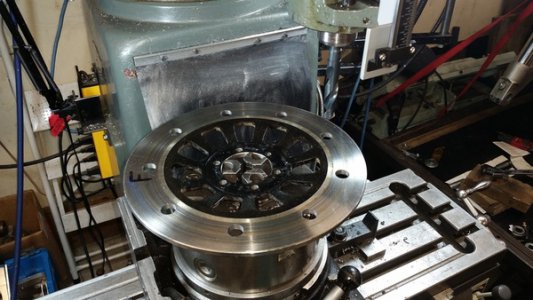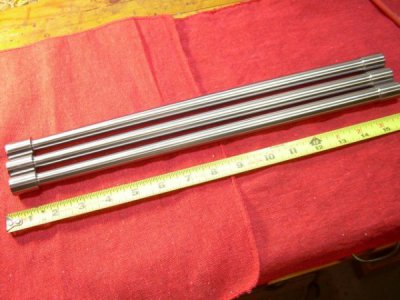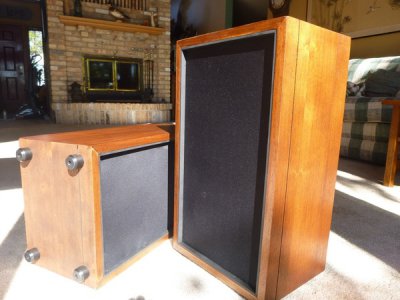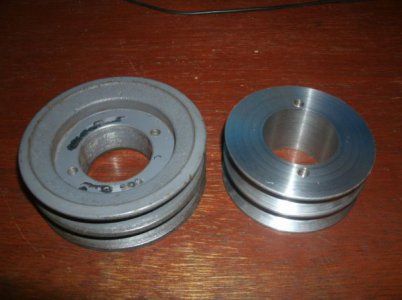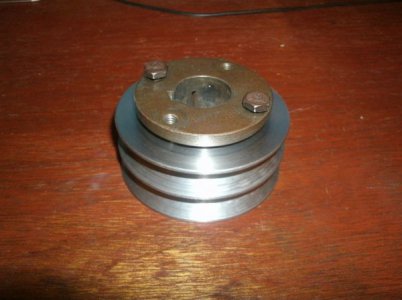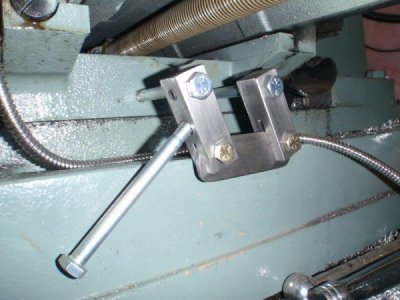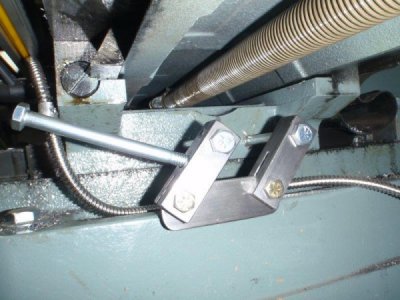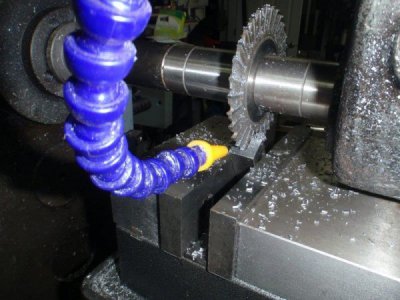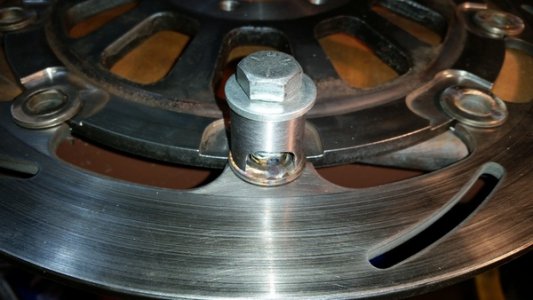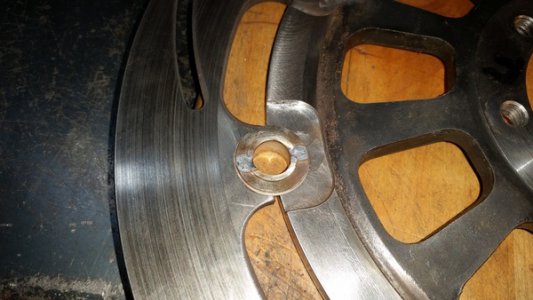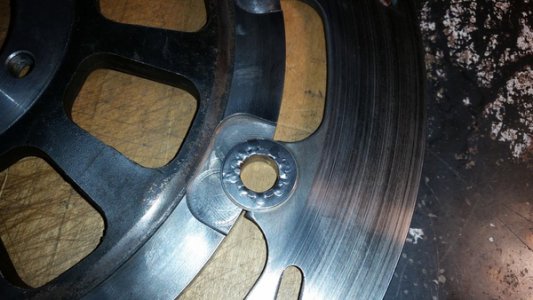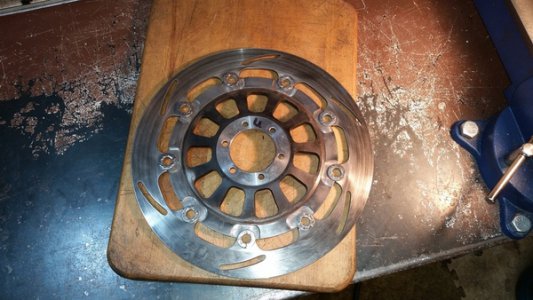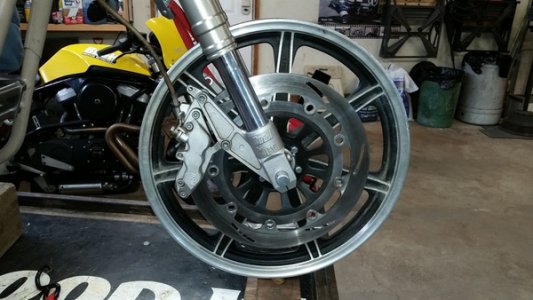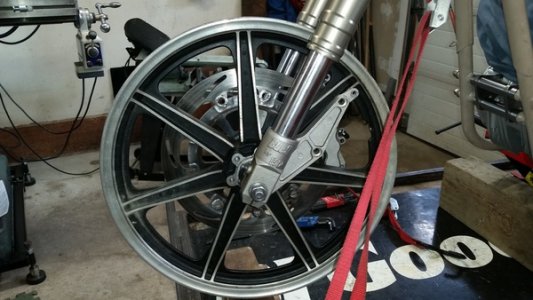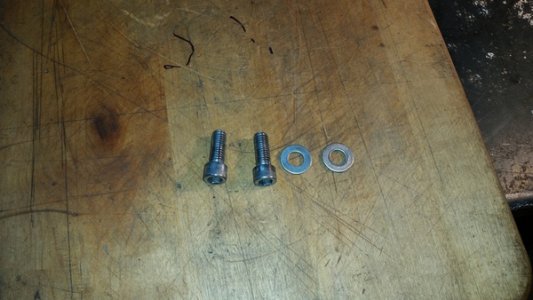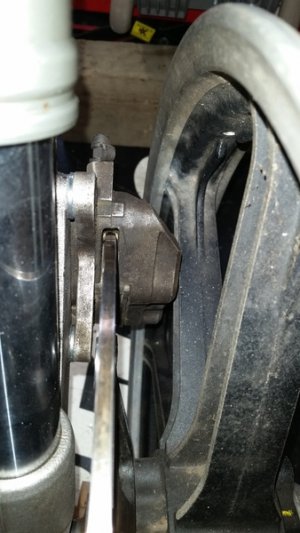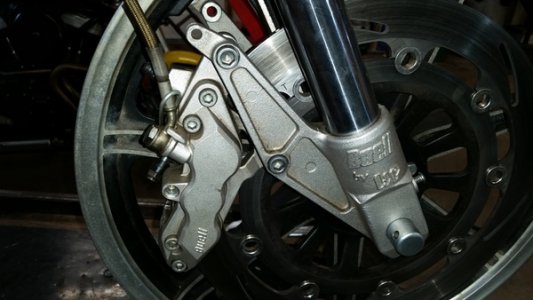I'm still working on my Yamaha XS650 project and fitting the Buell forks to it. One challenge in this is the front brake. I was planning to use the single Buell 340mm rotor because I have a caliper and it would be way lighter than a dual caliper set up with two 290mm rotors from a Yamaha XS1100 that I also considered.
I bought a used Buell brake rotor on eBay and was going to machine an adapter to make the 5 bolt hole Buell rotor fit the 6 bolt hole Yamaha wheel. Unfortunately the Buell rotor was bent. I shot a video and sent it to the vendor and he promptly refunded my money and told me to scrap the rotor.
I decided that the bent Buell rotor might be usable if only the aluminum carrier is bent and not the stainless steel braking surface. I removed the 9 buttons attaching the 2 parts together and checked the steel part on my surface plate and it appears to be dead flat. I decided to attempt to make a hybrid rotor using a Yamaha disc and the outer part of the Buell rotor.
Here's the Buell rotor with the center removed laying over the Yamaha one. This might work!
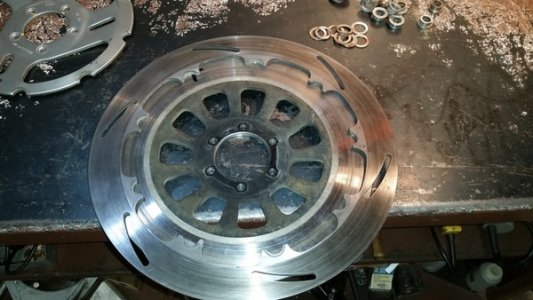
I measured the button hole radius on the mill and laid out and spot drilled the 9 holes in the Yamaha rotor.
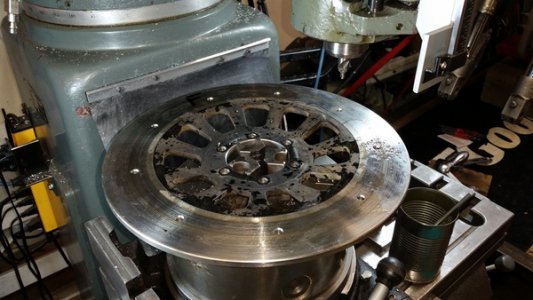
I then drilled them to 21/32" or .656" matching the size of the holes in the Buell rotor.
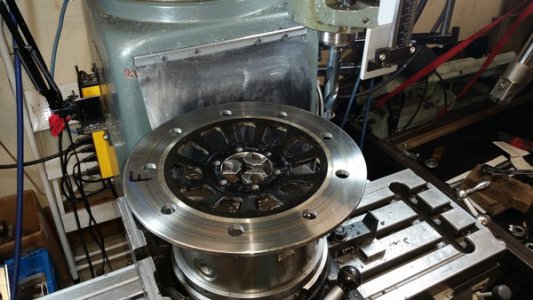
When I checked the hole layout against the Buell rotor it matched perfectly, that was a relief.

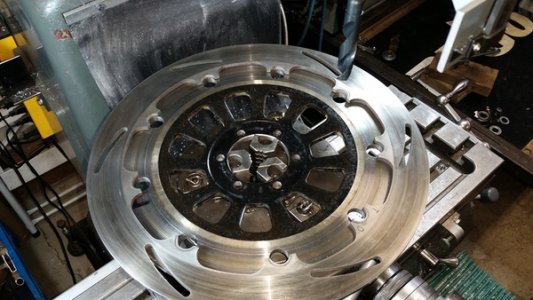

I measured the OD of the Buell rotor carrier and set up a 1/4" end mill to cut out that circle on the Yamaha rotor.
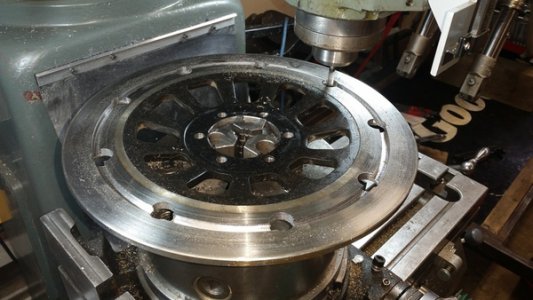
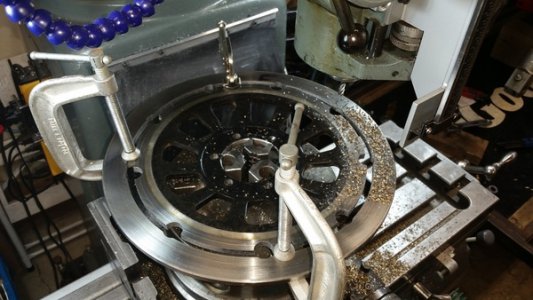
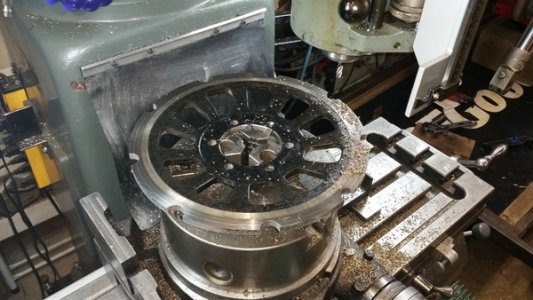
The Yamaha rotor is 2mm thicker than the Buell one so I milled a pocket at each button location so the thickness of both parts will be the same where the buttons mount.
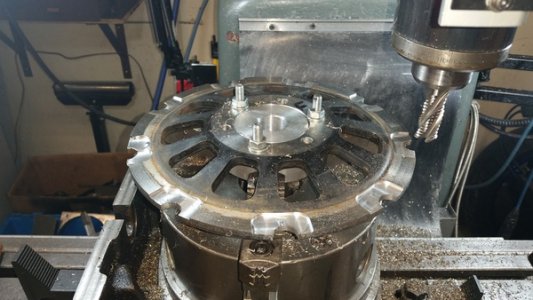
I assembled the parts temporarily to check the fit with the old buttons and it looks good. Next I have to pick up some 303 stainless bar to make the new buttons with.
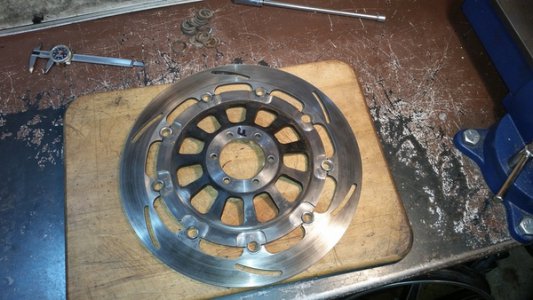
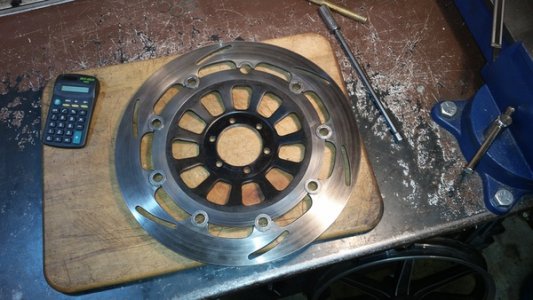
Time will tell if this is going to work out but all I have invested so far is the Yamaha rotor which I was not going to use anyway.
